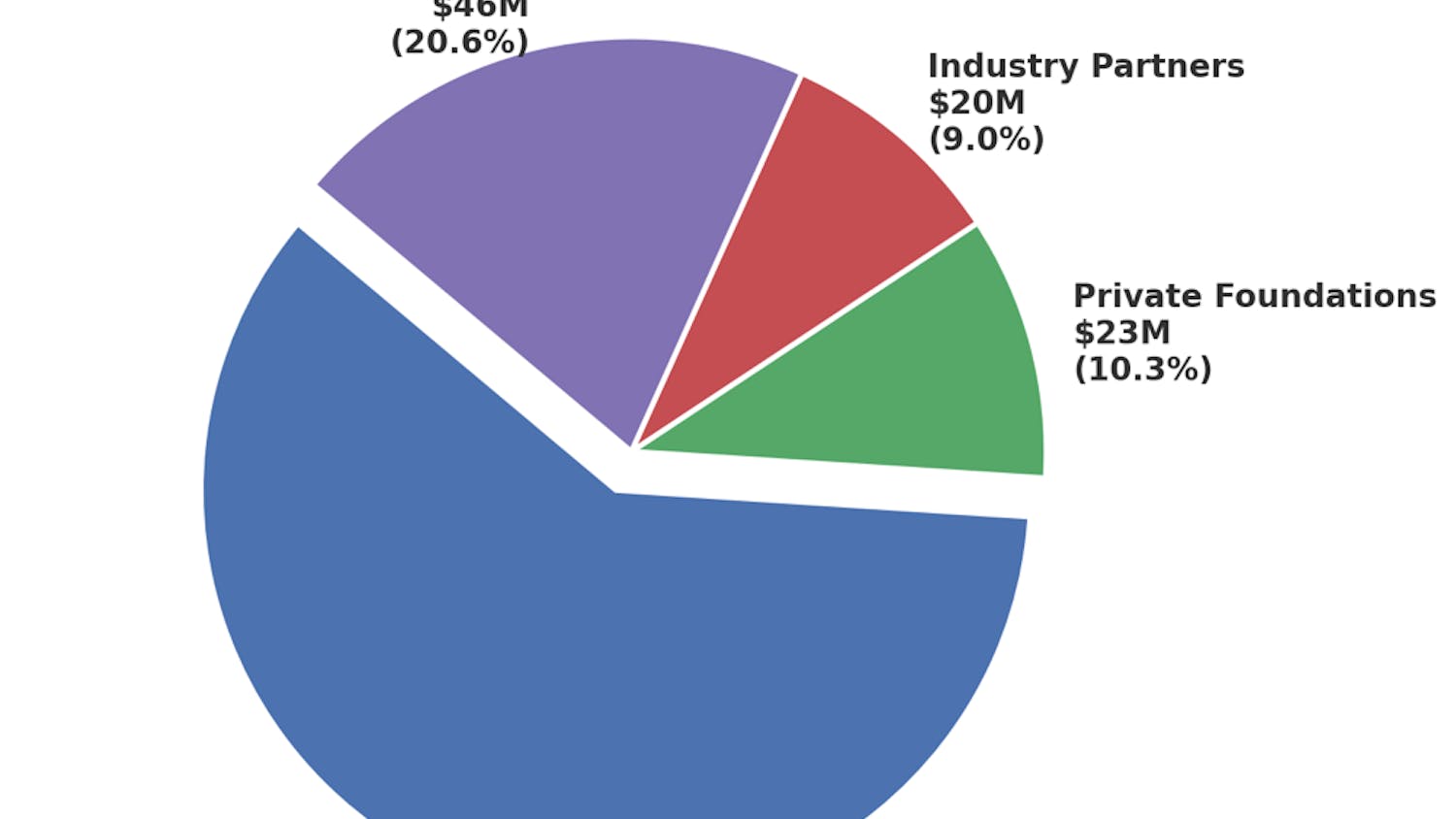Gregory Larson and Giuseppe Macerata, executive chefs for North Dining Hall and South Dining Hall respectively, are juggling much more than just ingredients this year.
Maintaining safety for the campus community and kitchen staff, while also being responsible for providing fresh food, is no easy task. However, the campus dining staff is working hard to make food for thousands of undergraduates while adhering to COVID-19 protocols.
For Macerata, cooking has always been a part of his identity. He grew up in family restaurants and has been a chef at Notre Dame for nearly 25 years.
Larson started working at Notre Dame in 2004 and worked his way up to the executive chef position. He hadn’t always planned on cooking – it was a necessity at first and became a hobby later. After realizing cooking was his passion, he completed culinary school before moving to South Bend.
The executive chef position at Notre Dame is centered around student life, Larson said. Dining on campus is an essential facet of residing on campus.
“Our primary focus is residential dining and making the students feel welcome and feel at home,” Larson said. “It’s about giving variety and keeping it interesting and making sure that happens.”
Larson and Macerata’s position also includes managing staff and maintaining safety, especially during the COVID-19 pandemic.
“It’s not only food safety but physical safety and staff and things like that, and we are responsible for all of it,” Macerata said.
However, their roles as chefs on a college campus are unique in many ways. They don’t work in a typical kitchen environment because they don’t serve typical customers.
“We’re given parameters and then we push the boundaries of the parameters,” Macerata said. “We’re able to push the boundaries on food and the experience which is really cool. This industry is constantly evolving, so if we put our feet in the mud, we get stuck.”
However, cooking has more meaning than just combining ingredients to create dishes to the two chefs. Cooking is about creating relationships and bringing joy to students on campus. Larson finds fulfillment in creating food for students and being a part of the Notre Dame experience.
“We get to learn from the students,” Larson said. “That’s probably the most rewarding part, getting to see all these students for four years and watching what they do. At times it can feel thankless like any other job, but it also connects you to people that you don’t get connected to in a normal kitchen environment. There’s always someone to meet and there’s always something to learn."
The new protocols surrounding COVID-19 have completely transformed campus dining. In the past, students were able to serve themselves in a buffet style. Now, food must be boxed up and taken to go in a sustainable manner. In the beginning, Larson and Macerata received a lot of negative criticism.
“In the beginning of this, it was kind of nightmarish for us to be honest,” Macerata said. “We did a complete turnaround overnight. That’s one thing we learned. Here’s what we know today, tomorrow might be different. We didn’t do well right off the bat, but we never gave up. Every day we came back and kept trying and we kept adapting every single day and even hour by hour.”
Over the last few months, dining increased in efficiency and variety, while keeping COVID protocols in mind. For example, the dining halls began to provide more inclusive options, like adding a vegan line and fresh desserts. The dining hall reopened for in-person dining with plexiglass shields on Oct. 5.
Larson and Macerata plan on adjusting as needed in the upcoming months.
“I don’t think we’ve stopped changing at all,” Larson said. “We’re still figuring out how do this the best way we can and get back to our identity as chefs. I think that we’re still uncertain about the future.”
At the end of the day, Macerata said it all comes back to serving students and bringing joy to the community.
“I don't have a favorite dish to make, but I do have a favorite reaction. If I make something, and I see the customer smile,” Macerata said. “They're genuinely truly happy and it doesn't matter what it is.”
Executive chefs reflect on Notre Dame campus dining in light of COVID-19
Students pick up food in South Dining Hall
Students pick up food in South Dining Hall to eat outside socially distanced or in their dorms in the midst of the COVID-19 pandemic.









